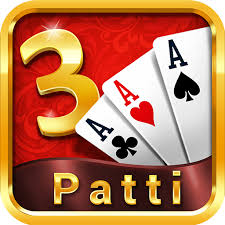Teenpatti, which translates to “three cards” in Hindi, has its roots in the Indian subcontinent. The game is believed to have evolved from British card games like Three-Card Brag, which were introduced during the colonial era. Over time, Teen Patti developed its own distinct style and rules, becoming deeply ingrained in Indian culture.
Traditionally played during festivals like Diwali, Teen Patti has been a symbol of luck, prosperity, and togetherness. The game is typically played in a casual, social setting, often accompanied by friendly banter and a sense of camaraderie.
Rules of Teen Patti
Teen Patti is a simple yet engaging game that can be played by 3 to 10 players using a standard 52-card deck. The objective is to have the best three-card hand or to bluff your opponents into thinking you do. Here’s how the game is typically played:
- The Boot (Ante): The game starts with each player placing an initial bet, known as the “boot” or “ante,” into the pot. This is the minimum amount of money or chips that all players must contribute.
- Dealing the Cards: Once the boot is collected, the dealer distributes three cards to each player, face down. Players can choose to look at their cards (playing seen) or keep them face down (playing blind).
- Betting Rounds: The game proceeds with betting rounds, where players can choose to bet, raise, or fold based on their confidence in their hand or their bluffing skills. Players who are playing blind must bet at least half of what the seen players are betting.
- Hand Rankings: The strength of a hand in Teen Patti is determined by specific combinations:
- Trail (Set): Three cards of the same rank, e.g., 3 Kings.
- Pure Sequence (Straight Flush): Three consecutive cards of the same suit, e.g., 4-5-6 of Hearts.
- Sequence (Straight): Three consecutive cards of different suits, e.g., 5-6-7 of mixed suits.
- Color (Flush): Three cards of the same suit, not in sequence, e.g., 2-5-8 of Spades.
- Pair (Two of a Kind): Two cards of the same rank, e.g., two Queens.
- High Card: The highest card in a player’s hand when no other combination is possible.
- Showdown: The betting continues until all but one player has folded, or until the players decide to reveal their cards. The player with the highest-ranking hand wins the pot.
Cultural Significance of Teen Patti
Teen Patti is more than just a card game in India; it is a cultural phenomenon. It is often associated with festivals and celebrations, particularly Diwali, where playing Teen Patti is considered an auspicious activity that symbolizes the hope for wealth and good fortune in the coming year.
The game also plays a role in strengthening social bonds. Whether played with family, friends, or even strangers, Teen Patti brings people together, fostering a sense of community and shared enjoyment. The game’s reliance on strategy, intuition, and the occasional bluff mirrors the complexities of social interactions, making it a perfect fit for gatherings.
Modern Adaptations and Online Teen Patti
With the advent of digital technology, Teen Patti has successfully transitioned into the online gaming world. Numerous mobile apps and online platforms now offer Teen Patti, allowing players to enjoy the game anytime, anywhere. These platforms often include features like real-time multiplayer, tournaments, and various game modes that add new twists to the traditional game.
Online Teen Patti has expanded the game’s reach beyond India, attracting a global audience. The convenience of playing online, coupled with the ability to compete with players worldwide, has contributed to Teen Patti’s growing popularity.
Conclusion
Teen Patti remains a timeless and beloved card game that has evolved with the times while retaining its cultural significance. Whether played around a table during Diwali or on a smartphone app, Teen Patti continues to bring joy, excitement, and a sense of connection to players of all ages. Its blend of simplicity, strategy, and social interaction ensures that Teen Patti will remain a cherished part of Indian culture for generations to come.







